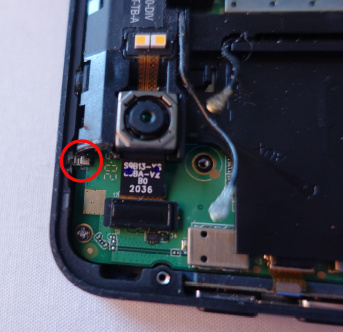I read here a bit about navigation with the Librem5 and PureOS.
Can somebody link to the post where somebody installed PureMaps from source? I don’t like Flatpak and would like to keep it off my device.
Can somebody link to the post where somebody installed PureMaps from source? I don’t like Flatpak and would like to keep it off my device.
I hate Flatpak too.
I actually managed to get a GPS 3D fix at two occasions yesterday. They were shortlived though and later when taking a walk outside I didn’t manage to get a fix at all during almost an hour out in free air.
When exchanging Wifi/BT card I did just that and thought it would reveal an obvious way to adjust the GNSS antennae. Unfortunately I didn’t see anything that resembled a spring contact, just the tiny metal thing I believe is the GNSS ground (see picture). Without enough information on how to bend something, I put the pieces back together and was happy not to have broken anything and that the new Sparclan card worked right the way.
I was able to get location tracking to work by manually updating the almanac using the tools found at https://source.puri.sm/angus.ainslie/librem5-agps.
These steps may or may not work for others.
First, I downloaded the latest byzantium arm64 artifact onto my Librem 5 and extracted the contents of the archive.
Next, I installed the librem5-agps_*_arm64.deb package using apt install like this (the file name may be different):
sudo apt install ~/Downloads/artifacts/debian/output/librem5-agps_0.1-0pureos1+librem5ci82942.81bfde6_arm64.deb
Finally, I ran sudo gnss-share-agps to update the almanac. The package should be removable as librem5-agps since it adds home screen icons, which may be annoying.
If the gps works well, does that imply librem5-agps is correctly installed and/or updated? Or will updating the almanac always improve things?
From where you downloaded this exactly? Thanks
Sorry, I forgot to provide the link in my post.
I don’t think it’s required nor is it installed by default to my knowledge. I have a second Librem 5 and I don’t recall doing this on it.
I downloaded and installed the above artifact, which installed 4 apps on the home screen. Unfortunately it isn’t clear from the readme how to use these tools to update almanac etc. I have tried them all, but location in maps is still jumping between the place I used to live 18 months ago and and a location close to where I am now (but not closer than a couple hundred meters) and a third place I visited a couple of weeks ago.
Cleary, my GPS isn’t working properly and, as before, seems to have an inherent difficulty in getting a fix.
Any ideas would be welcome.
Minor progress, X-rays imagining of assembled Librem 5, not much usable to investigate which or unknown variants of GNSS antennas design is used in the actual bought Librem 5.
Have a good GPS Signal and the Position on the Gnome Map. However i installed satellite via flatpack in the not up to date Version 0.4.0 and it have issues like not List the Bars and Throw this Python error:
"NoneType" object has no atribute "get_traces"Will remove that flatpack and try to use flatpack-build or pip and fetch Version 0.4.1 to see if there is some improvement. I saw with thap app some satillites but had no bar as indicator in the view like in this picture.
Is there a way to download some Maps to navigate offline?
I hoped it was solved in Version 0.4.1, the last developer post in your issue report, was not clear. And with flatpack-build i am not sure if i have to run that build commands as user or as root. So i will take some time and wait.
And if nothing work i just can read directly from the Positioning Device (/dev/gnss0, like Skalman described) and save that information to merge it into a gpx File later.
is there a way to test the librem5-agps package, is it ready for testing or does it still need work? the installation instructions dont make sense to me.
It needs more work.
The interesting thing about Assisted GPS is that you are essentially copying data from one GPS device, which has already downloaded everything, to another GPS device, so that it can start tracking without having to collect the same data, which takes a while and requires a good signal. The store and load commands are built into the GPS device, which uses a simple text based protocol accessed over a serial port. I am not sure if the data is location specific, but it seems to me like someone could run their own AGPS server at home or something, and pull the data from there when turning on GPS on their mobile device.
Almanac is not, but you can only get ephemerides for satellites you’re seeing and can decode signal from.
We actually figured out the format the module uses for its data (mostly) and we’ll be translating publicly available almanac and ephemeris data for all satellites into what the module expects.
